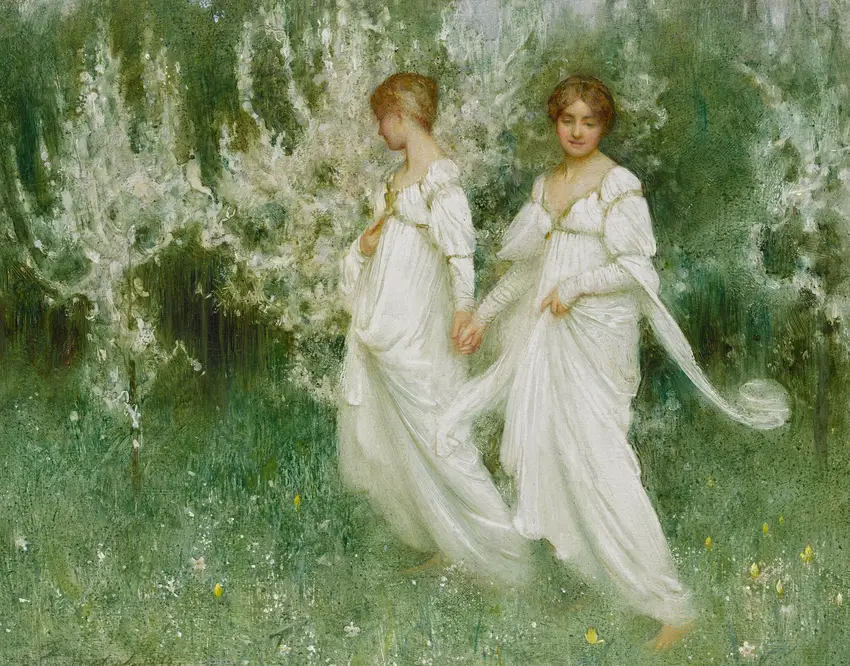John Singer Sargent’s portrait of Ellen Sears Amory Anderson Curtis captures the quiet elegance of its subject with remarkable sensitivity. The artist’s deft brushwork brings out the delicate textures of her lace-trimmed dress, while the soft play of light across her face hints at a thoughtful, introspective mood. Sargent avoids stiff formality, instead allowing a sense of warmth and spontaneity to emerge—notice how the loosely painted background seems to dissolve, drawing focus to her poised yet unguarded expression. Painted during his prolific period as a society portraitist, this work reveals his ability to balance flattery with psychological depth, transforming a conventional commission into something quietly revealing.
There’s an intriguing tension between the meticulous rendering of details like the intricate lace collar and the almost impressionistic handling of shadows around her hands. The muted palette of creams and grays creates a restrained harmony, yet subtle shifts in tone suggest movement beneath the surface stillness. Sargent’s genius lies in how he makes such technical mastery feel effortless, as if the painting simply emerged fully formed. Unlike his more flamboyant society portraits, this piece feels intimate, almost private—a momentary glimpse into someone’s inner world rather than a public performance of status.

-full.webp)
-full.webp)
-full.webp)
-full.webp)
-full.webp)

-full.webp)
-full.webp)